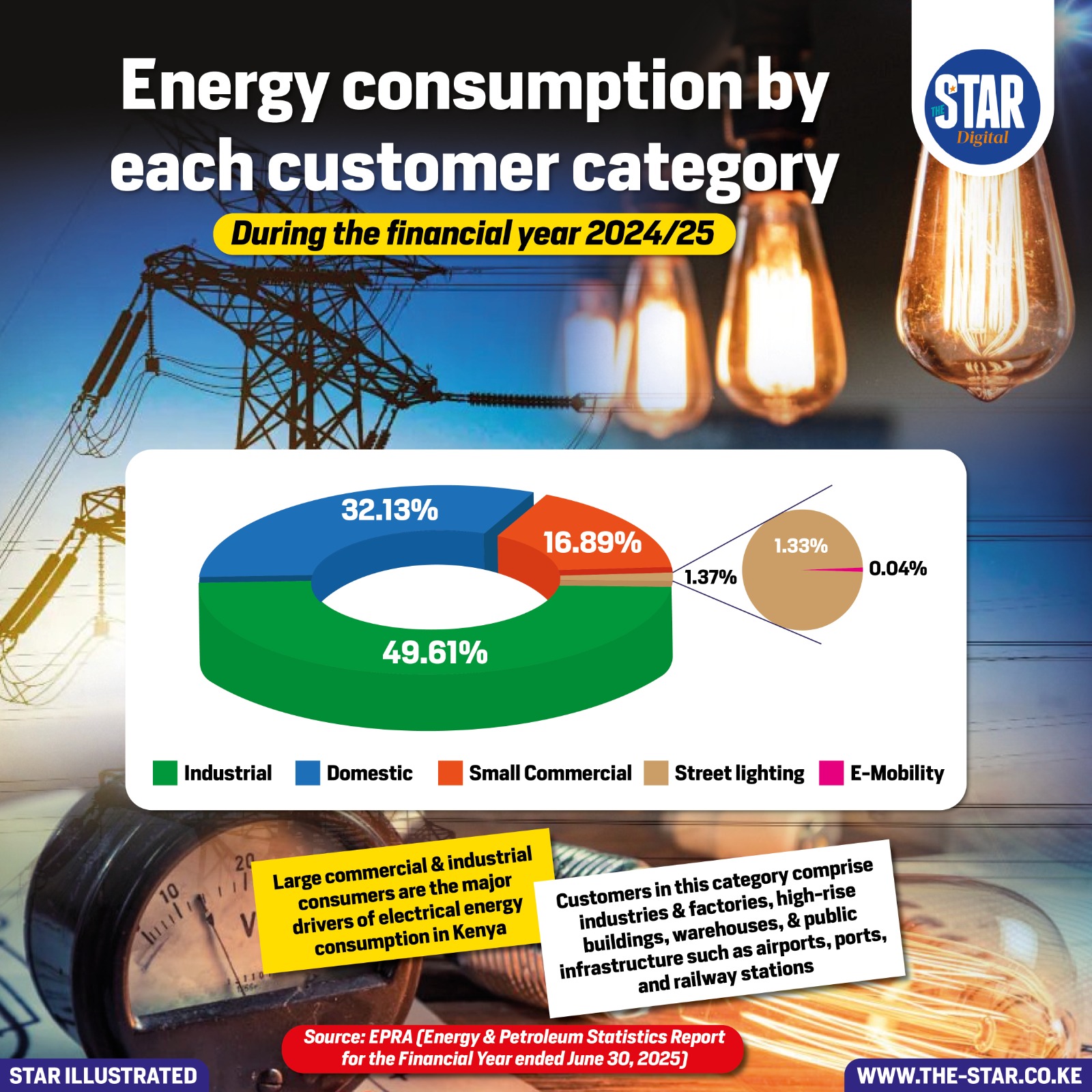
Energy Generated in Kenya: 2020-2025
The total electrical energy generated rose steadily each financial year.
Large commercial and industrial consumers are the major drivers of electrical energy consumption in Kenya.
In Summary

Audio By Vocalize

Electricity consumers are grouped into the following broad categories: large commercial and industrial consumers, small commercial, domestic consumers, street lighting and electric mobility. There was a general increase in electricity consumption across all customer categories with each category recording all-time highs.
Large commercial and industrial consumers are the major drivers of electrical energy consumption in Kenya. The monthly electricity consumption by this category exceeds 15,000 kWh.
Customers in this category comprise industries and factories, high-rise buildings, warehouses, and public infrastructure such as airports, ports, and railway stations.
In the year ending June 2025, this category of consumers accounted for 49.61% of total electricity consumption in the country, using 5,620.71GWh.
However, its dominance as the largest energy consumer category reduced from 51.86% in the previous financial year to 49.61% due to an increase in the consumption share of other categories.
Domestic consumers registered a 13.03% increase in electricity usage, making it the largest increase in any consumer category. Consumption in this category increased by 419.54GWh from 3,220.78GWh used in the year ending June 2024 to 3,640.32GWh in the year ending June 2025.
They accounted for 32.13% of total consumption, up from 30.76% in the previous year. This growth can be attributed to higher per capita consumption and an increase in the number of customers.
Small commercial consumers, comprising of micro, small and medium enterprises (MSMEs), accounted for 16.89% of total consumption. Consumption in this category grew by 197.72GWh from 1,715.54GWh in the previous year to 1,913.26GWh in the year under review.

The total electrical energy generated rose steadily each financial year.

Kenya has the highest wind generation capacity at 99.46%.